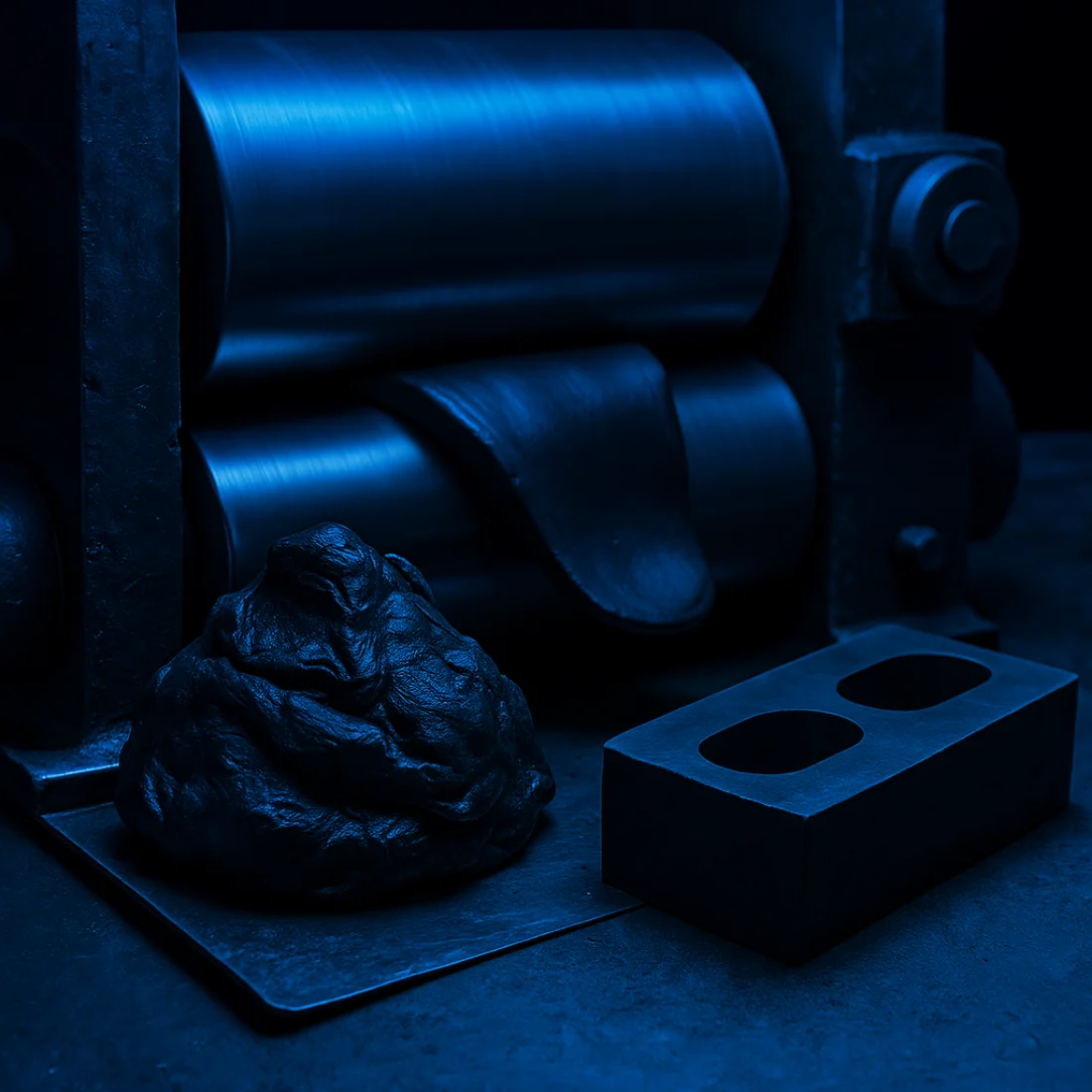How Rubber Products Are Made: From Compound to Product
The manufacture of rubber products is a complex process that includes several stages—from raw material preparation and compound rolling to shaping and vulcanization. This article aims to explain in detail how rubber products are made in companies like Tech-gum and why each step is essential to product quality.
Raw Material Preparation and Mixing
The first step is selecting the base materials. The main component is natural or synthetic rubber, to which various fillers, antioxidants, plasticizers, and chemical additives are added to enhance properties like abrasion resistance, temperature stability, and mechanical strength.
Mixing and Compound Rolling
Materials are evenly mixed in specialized mixers to create a homogeneous rubber compound. Then the compound is processed in a machine for rolling, where it is repeatedly pressed between rotating rollers. This ensures uniformity and proper integration of all additives into the rubber matrix.

Shaping and Vulcanization
Shaping
Once the compound is ready, it is cut into strips or blanks and then transferred to molds or extrusion machines. Extruded products include profiles, hoses, or rubber strips, while molding produces sheets, bushings, seals, or dampers. Molds are tailored to the exact shape and dimensions of the final product.
Vulcanization: Turning Raw Rubber into End Product
Vulcanization is the key step where heat and pressure initiate chemical reactions forming sulfur bridges for a three-dimensional network. This process makes rubber durable, elastic, and resistant to stretching, wear, and temperature fluctuations. It usually occurs at 140–180°C, adjusted to the rubber type and thickness.
Finishing and Quality Control
After vulcanization, the product is removed from the mold, cleaned, and visually inspected for damage or defects. Edges may be ground, cut, and marked with logos or serial numbers.
Final quality checks include:
- Dimensional checks: Verifying compliance with technical drawings.
- Hardness testing.
- Stretch and tear resistance: Ensuring physical performance under load.
- Environmental durability: Testing for resistance to air, temperature, and chemicals.
Conclusion
The rubber product manufacturing process—from raw compound to final product—is strictly defined, as every step—from rolling to vulcanization—affects final product quality. Tech-gum uses modern production lines and strict controls to ensure top-level reliability for products like seals, bushings, and dampers. Contact us for expert advice on the right solution for your needs.

